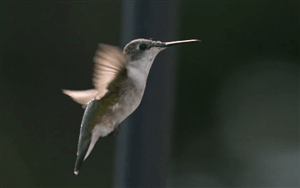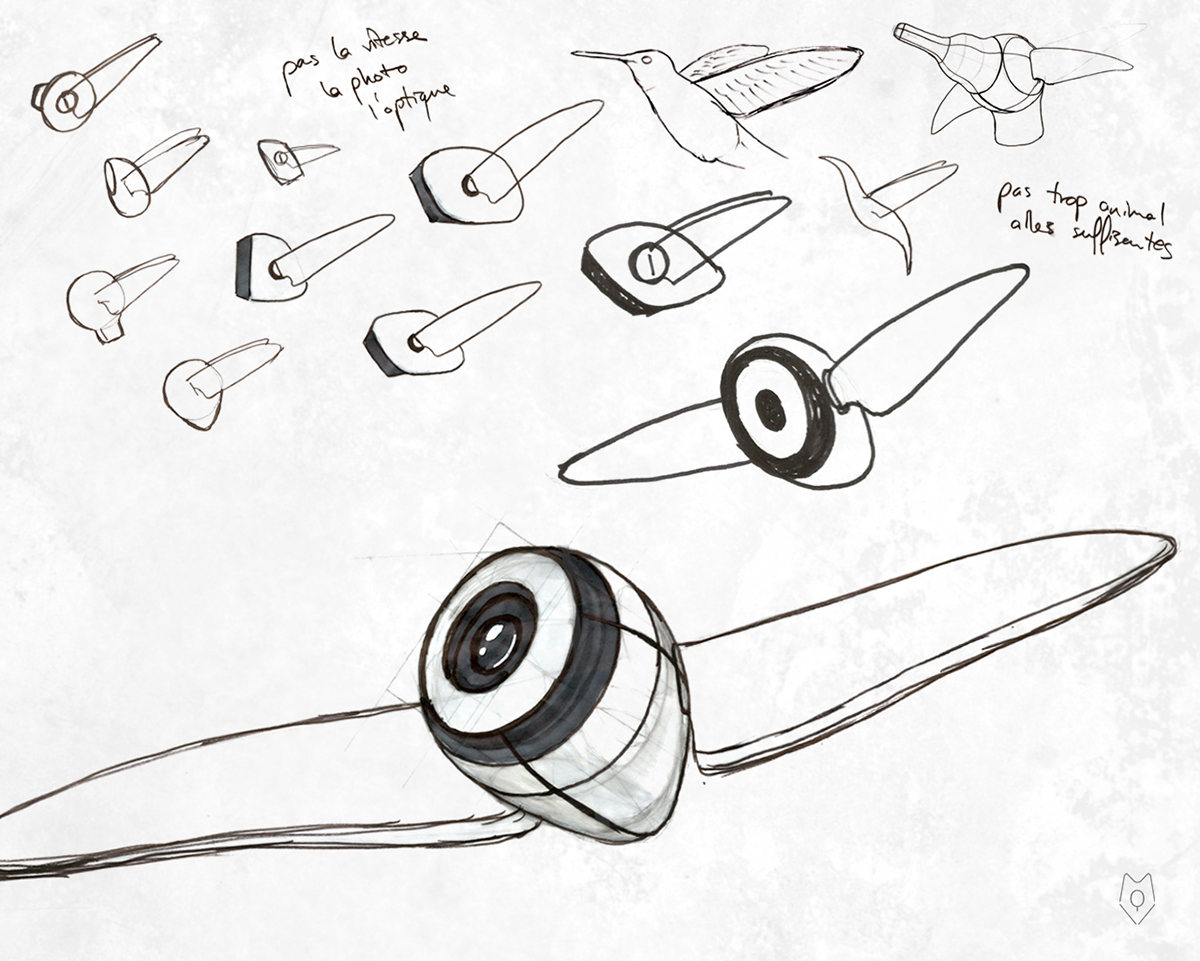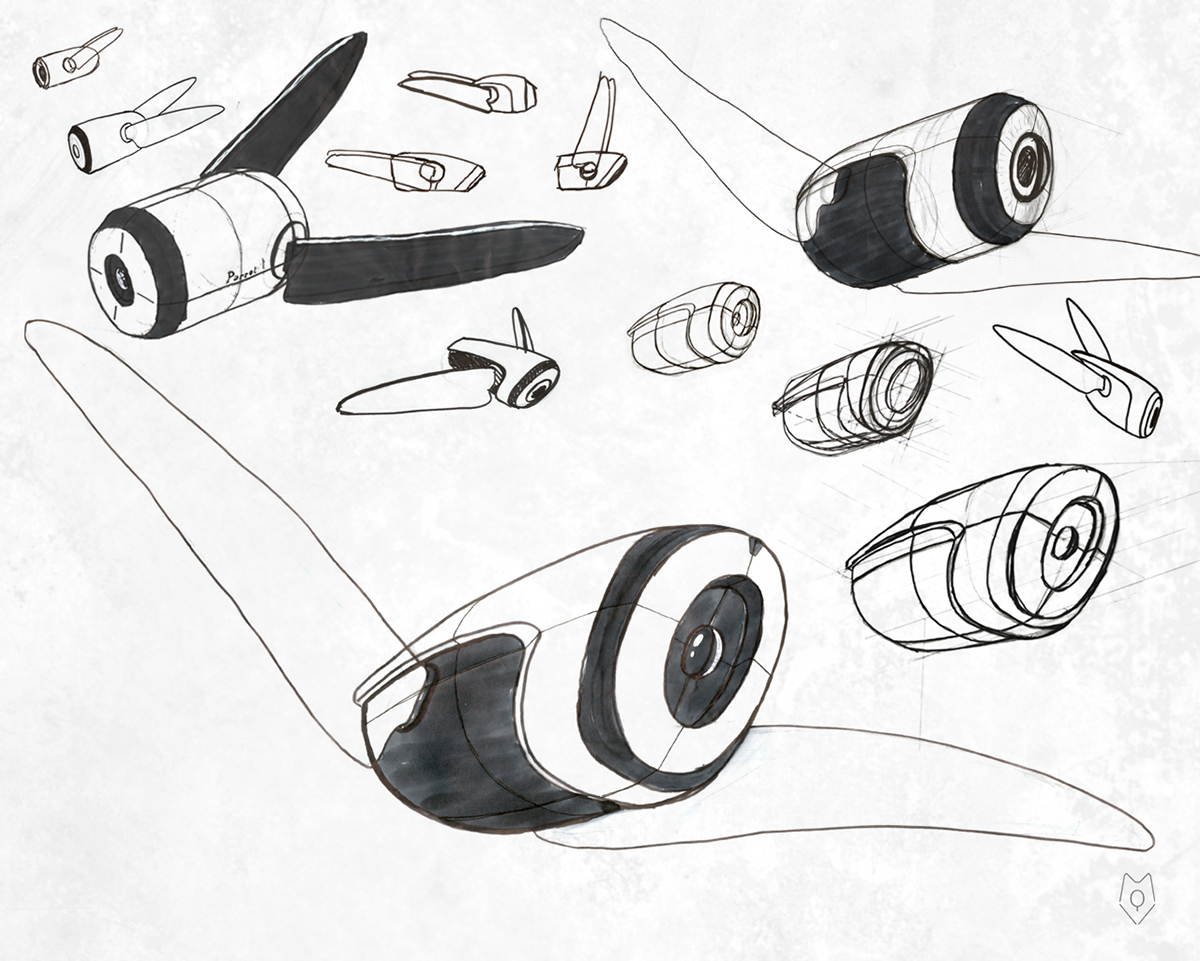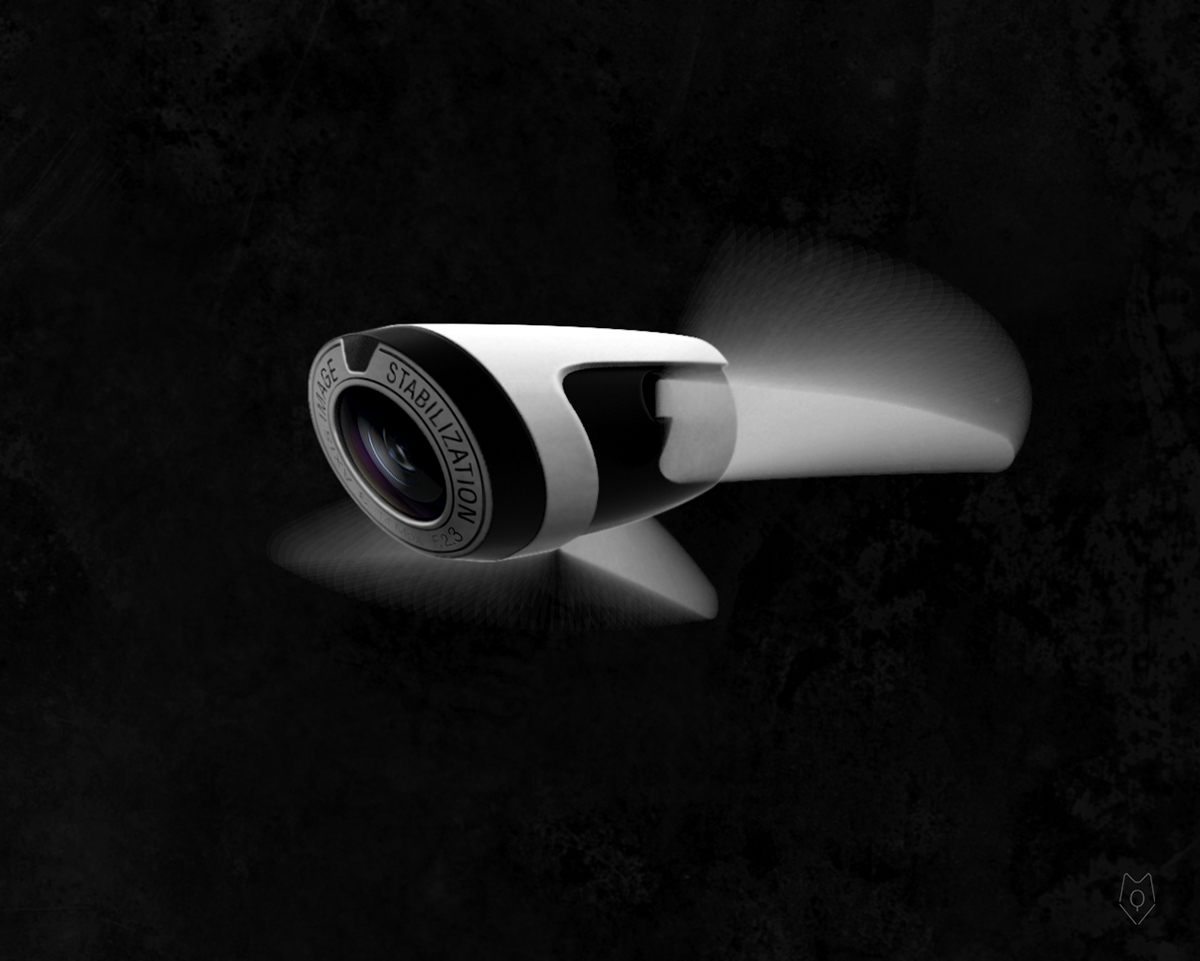Project genesis
Following the CES 2016 introduction to the Parrot Disco, first ready-to-fly winged drone, easy to pilot from any smart device (and featuring first person view, automatic takeoff and landing, as well as return home fonction and other assisted flight modes), I felt impressed by this game breaking announcement and started thinking about yet another way to change the idea of what a drone is, searching for inspiration within nature.

Parrot Disco ©.
Most common drones (featuring rotors, whether it be four or more), and fixed-wing ones are essentially different because they don't fly the same way. The first ones hover thanks to multiple rotors, the second ones glide, which is a more "natural" type of flight. But if we look more into what nature opt for, we automatically end up considering flapping flight. Why aren't flapping drones developed within the consumer electrics market yet? Probably because this kind of flight is much more complex, and far more energy consuming.
However, in 2014 Dr. Mirko Kovac from Imperial College, explained how drones whose design is inspired by nature were set to become part of our everyday lives :
"It is very important to be curious about biology for engineers, it's a creative process that actually inspires noble designs, noble flying robots"
So that's when the Hummingbird starts getting all the interest. It is the one and only vertebrate capable of hovering and speed flying forward of back ward with only one flapping pair of wings. In 2014 engineers from Stanford University collaborated with searchers from Wageningen and Eindhoven Universtities in Netherlands, and University of British Columbia in Canada, to study the hummingbird's wings efficacy and compare it with helicopter rotors. While several other Universities in the US, Great Britain and Japan also try to model this unique bird's flight and to develop UAV (Unmanned Aerial Vehicle ) capable to imitate it.
Pr. David Lentink from Stanford University to explain and conclude :
"In terms of the power they require to lift their weight, the best hummingbird
(Calypte Anna) was about 27% more efficient than the world's
most advanced micro helicopters."
"Rotary motion may be the most efficient way to hover, but [it also has strong disadvantages and] hummingbirds use their wings for maneuvering as well, and they're incredible at it. If we start to consider how hummingbird-inspired wing design improvements might be applied to flapping wing micro UAVs, we might also see more agility at the same time."

Ideation, concept definition and validation research.
Concept
A hummingbird drone could actually be a revolution for the following reasons: it'd be the first drone anyone could carry on in a backpack, a purse or a pocket, if it's made really automatic (takeoff, landing, back to hand, focus...) and easy to use with a smartphone, we could see it as an extention of one's phone camera, offering an interesting new type of point of view, from a reasonable distance, above, underneath, etc. just perfect for retardant pictures, cool selfies or trip souvenirs.
It would also obviously raise some challenges such as: permanence againste wind or other outside conditions, wings appearance within the camera angle, lower payload so lower battery capacity and autonomy, etc. But it only makes this project more interesting.
Technical constraints

Whereas technically speaking, such a drone would have to feature all the mechanical capabilities of a real hummingbird. First thing first, high frequency flapping (up until 70-80 Hz) involves high "metabolic" capacities. Then the hummingbird's shoulders are more like human wrists, enabling quite complex and unique flapping dynamics — drawing horizontal 8s — as well as hovering and backward flying. Finally, the hummingbird can orientate its body (and mass), as well as wings, differently following its will to go up, down, forward, backward, and it each one of its wings can flap differently to rotate.
All those observations make a start for the Beija-Flor (hummingbird in Brazilian Portugues, literally "flower-kissing") project design: the bond between the drone wings and body must be a double rotative one, and the drone's mass as well as camera also have to be able to independently rotate around the wings axis.
Inspiration

Different type of inspirations.
Shape exploration sketching

Spheric shape research sketching, ending in the first and second projetcs designs.

More organic shape research sketching, ending in the third project design.

Shape research sketching focused on Parrot's latest drones line, ending in the fourth project design.
Final design propositions

First project - Pokeball design.

Second project - U design.

Third project - Eye design.

Third project - Eye design.

Fourth project - Minibop design.
Basic animation





